Toyota RAV4 (XA40) 2013-2018 Service Manual: Fuel system
Precaution
- Before working on fuel system
- Do not work near an open flame.
- Keep gasoline away from rubber and leather parts.
- Discharge the fuel pressure before disconnecting
the fuel line to prevent gasoline from spilling out.
Refer to the following procedure.
- Discharge fuel pressure
Caution:
- Discharge fuel system pressure
procedures must be performed before
disconnecting any part of the fuel system.
- After performing the discharge fuel system
pressure procedures, pressure will remain in
the fuel line. When disconnecting the fuel line,
place a cloth or equivalent over fittings to reduce
the risk of fuel spray.
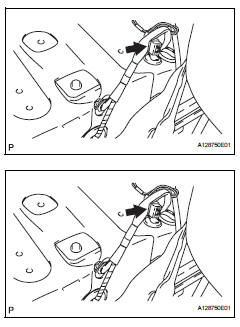
- Remove the console box (see page ir-83).
- Disconnect the connector.
- Start the engine. After the engine has stopped, turn the ignition switch off.
Hint:
Dtc p0171 (system too lean) may be set.
- Check that the engine does not start.
- Remove the fuel tank cap, and let the air out of the fuel tank.
- Connect the connector.
- Install the console box (see page ir-90).
- Disconnect fuel main tube
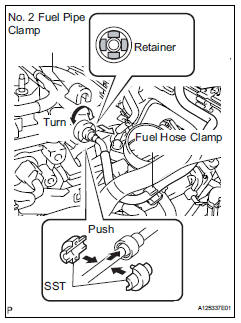
Notice:
Do not forcibly bend and twist the fuel main tube.
- Remove the fuel tube from the fuel hose clamp.
- Remove the fuel pipe clamp.
- Wipe off dirt on the fuel tube connector.
- Hold the fuel tube connector, and then install sst.
Sst 09268-21010
- Turn sst to align the retainer inside the fuel tube connector with the chamfered part of sst.
- Insert sst into the fuel tube and hold it. Then push the fuel tube connector toward sst side.
- Mount the retainer of the fuel tube connector onto the chamfered part of sst.
- Slide sst and fuel tube connector together towards the fuel tube until they make a click sound, and then disconnect the fuel tube.
- Drain the fuel remaining inside the fuel tube.
- Cover the fuel tube and fuel pipe with a plastic bag to protect the disconnected part.
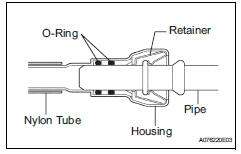
- Connect fuel main tube
- Connect the fuel main tube.
- Push the fuel tube connector until it makes a "click" sound.
- Install the fuel pipe clamp.
- Install the fuel tube to the fuel hose clamp.
- Disconnect fuel tube connector
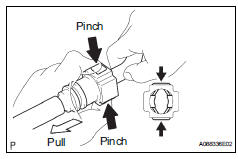
- Wipe off any dirt on the fuel tube connector.
- Pinch the fuel tube connector, and then disconnect the fuel tube. Do not use any tools.
- Drain the fuel remaining inside the fuel tube.
- Cover the fuel tube and fuel pipe with a plastic bag to protect the disconnected part.
- Connect fuel tube connector
- Connect the fuel tube connector to the fuel pipe.
- Push the fuel connector until it makes a click sound.
Hint:
If it is difficult to connect the fuel tube connector, apply a small amount of new engine oil on the tip of the pipe.
- Check for fuel leaks

- Make sure that there are no fuel leaks after performing maintenance on the fuel system.
- Connect the intelligent tester to the dlc3.
- Turn the ignition switch on, and push the intelligent tester main switch on.
Notice:
Do not start the engine.
- Select the active test mode on the intelligent tester.
Hint:
Refer to the intelligent tester operator's manual for further details.
- Check that there are no leaks from the fuel system.
- Turn the ignition switch off.
- Disconnect the intelligent tester from the dlc3.
Parts location
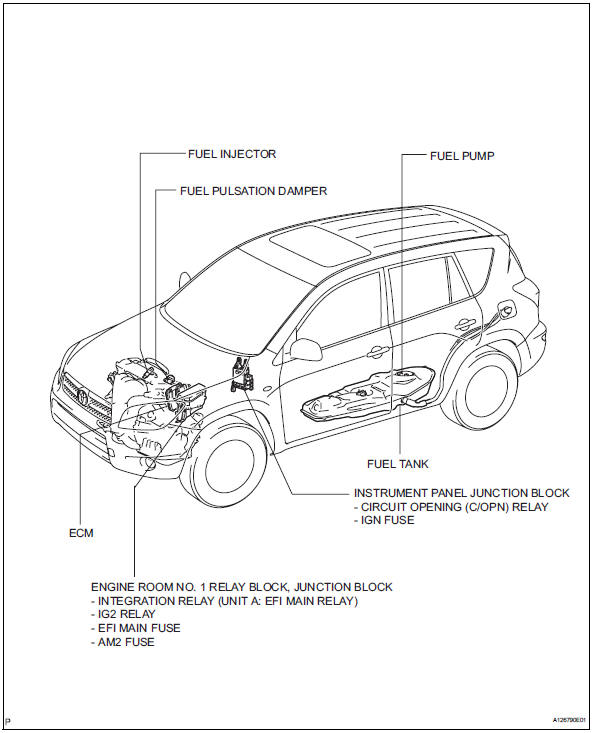
System diagram
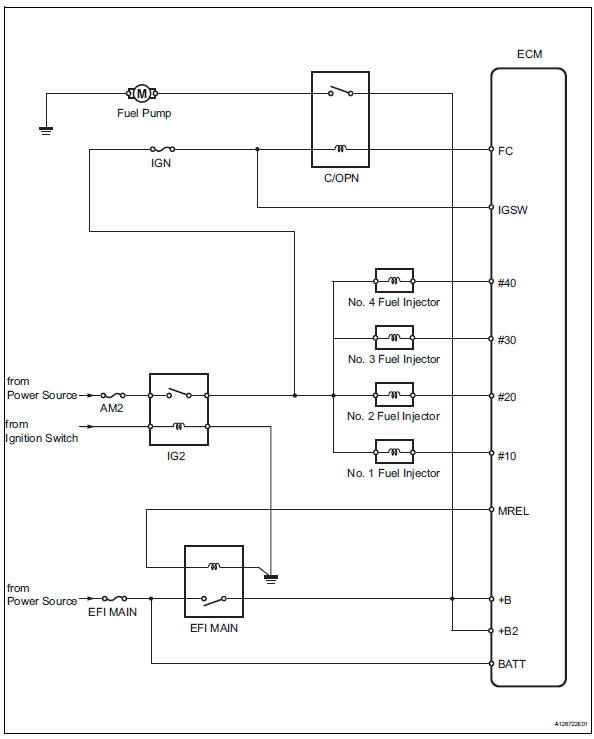
On-vehicle inspection
- Check fuel pump operation
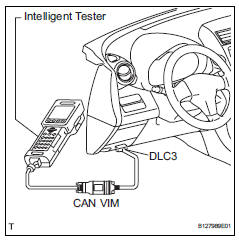
- Connect the intelligent tester to the dlc3.
- Turn the ignition switch on. Do not start the engine.
- Select the following tester menus: diagnosis, enhanced obd ii, active test and fuel pump/spd. Operate the fuel pump.
- Touch the fuel hose in the engine compartment to check the fuel flow, and you will be able to hear the sound of the fuel pump.
- Stop the fuel pump.
If there is no fuel flow, the fuel pump may not operate. Check the fuel pump circuit (see page fu- 33).
- Check fuel pressure
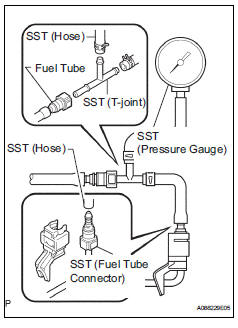
- Check that the battery positive voltage is above 12 v.
- Discharge the fuel system pressure (see page fu- 9).
- Disconnect the cable from the negative (-) battery terminal.
- Disconnect the fuel main tube (see page fu-10).
- Install sst (pressure gauge) as shown in the illustration.
Sst 09268-31011 (95336-08070, 90467-13001, 09268-41500), 09268-45014 (09268-41200, 09268-41220, 09268-41250)
- Wipe off any gasoline.
- Reconnect the cable to the negative (-) battery terminal.
- Start the engine.
- Measure the fuel pressure at idle.
Fuel pressure: 304 to 343 kpa (3.1 To 3.5 Kgf/cm2, 44 to 50 psi)
- If the pressure is not as specified, check the fuel pump and injectors.
- After checking the fuel pressure, disconnect the cable from the negative (-) battery terminal and carefully remove sst and the fuel tube connector to prevent fuel from spilling.
- Reconnect the fuel main tube (see page fu-14).
- Check for fuel leaks (see page fu-14).
 2Az-fe fuel
2Az-fe fuel
...
 Fuel injector
Fuel injector
Components
Removal
Discharge fuel system pressure
Caution:
Discharge fuel system pressure
procedures must be performed before
disconnecting any part of the fuel system.
After ...
Other materials:
When servicing active torque control 4wd vehicles
The active torque control 4wd rav4 is equipped
with the 4 wheel drive control system.
If incorrect preparations or test procedures are
used, the test will not only be unsuccessful, but may
be dangerous as well.
Caution:
Never accelerate or decelerate the vehicle
suddenly.
Obs ...
Adjusting the open position of the back door (vehicles with a power back door)
The open position of the power back door can be adjusted.
Open the back door, and adjust it to the desired position.
Press and hold the power back door switch on the back door until
the buzzer sounds 4 times.
Luggage compartment light
The luggage compartment light turns on when the back ...
Bluetooth® phone
message function
Received messages can be forwarded from the connected
bluetooth® phone, enabling checking and replying using the
audio system.
Depending on the type of bluetooth® phone connected, received
messages may not be transferred to the message inbox.
If the phone does not support the message func ...
